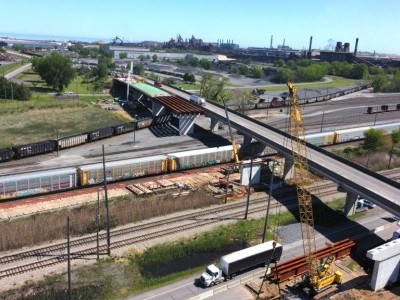E-bikes are a greener alternative but terminal operators beware
Dec 04, 2024Ports, terminals, and logistics facilities are typically designed to accommodate large vehicles and cargo handling equipment. The introduction of smaller, more vulnerable road users like e-bikes and e-scooters presents unique challenges. These vehicles are less visible , making traffic management and the prevention of human-machine collisions much more difficult. Typically, terminal traffic layouts and pavement conditions, are designed for large vehicles and plant, not for smaller, more vulnerable battery-powered personal vehicles
Cargo handling insurance specialist TT Club has long-standing experience of such terminal risks, TT’s Risk Assessment Manager Neil Dalus comments on the question of paved surfaces in particular. “Designed to withstand high volumes and heavy loads, the terminal surfaces often suffer significant wear and tear, resulting in uneven road conditions. For smaller wheeled battery electric vehicles, these conditions can be hazardous. Traversing rail crossing points, especially when wet, and encountering spills of cargo or oils further increase the risk of accidents. Two-wheeled vehicles, being inherently less stable than four-wheeled vehicles, are particularly susceptible to these hazards,” he highlights, emphasizing the need for operators to take care in introducing their use.
As the use of electric personal vehicles blurs the lines between different user groups within a facility, such as pedestrians, plant and handling equipment operations, TT recommends additional terminal traffic safety planning. This should include consideration of licensing, training, and personal protective equipment (PPE) requirements.
Additionally, charging and maintenance of these vehicles can also present significant challenges. Emerging data indicates a higher risk of fire during the charging process, necessitating thorough due diligence in procurement of vehicles and their charging points. Proper fire risk assessments for the location of charging points is essential to mitigate these risks.
Dalus concludes, “While battery-powered personal transport vehicles offer significant benefits in terms of decarbonisation and cost-effectiveness, their integration into ports, terminals, and other logistics facilities however requires careful planning and consideration of risk. Addressing these issues will be crucial to achieving a balance between innovation and safety in the ongoing and rapidly developing drive to achieve a cleaner working environment in the cargo handling industry.”
Similar Stories

Jeffersonville port delivers record road salt shipments to Greater Louisville area during recent winter storms
View ArticleNC Ports Notice: Holiday Schedule Notice Martin Luther King Jr. Day
The Port of Wilmington Container Gate (South Gate) and the Charlotte Inland Port (CIP) will operate on a reduced schedule on Monday, January 20: 8 AM-12 PM and 1 PM-5…
View Article
Port of Long Beach’s Cordero hails ‘Green Port’ achievements
View Article
Port of San Diego accepts $5 million grant from the San Diego County Air Pollution Control District for clean air project
View ArticleBiofuel can deliver significant GHG emissions reductions but future uptake could be hampered by supply, says DNV
According to DNV’s latest white paper “Biofuels in Shipping”, key biofuels like FAME and HVO have great potential for reducing greenhouse gas (GHG) emissions and supporting compliance with maritime regulations,…
View Article
Adriatic Gate Container Terminal welcomes Bora Med Service
View ArticleGet the most up-to-date trending news!
SubscribeIndustry updates and weekly newsletter direct to your inbox!





